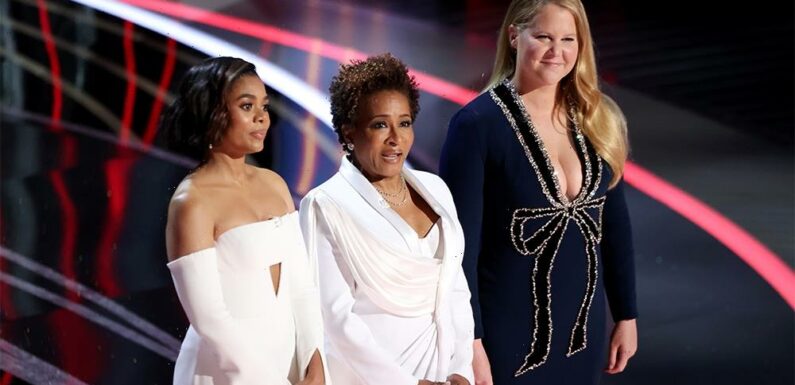
The word “Oscar” has several meanings. It’s a golden statuette; it’s the highest achievement in film; and it’s the telecast.
The first two are in fine shape. But that third one is a hot mess, threatening to tarnish the others.
So it was a big relief when new Academy of Motion Picture Arts & Sciences CEO Bill Kramer and president Janet Yang, along with producers Glenn Weiss and Ricky Kirshner, on Sept. 17 revealed they’re working to fix it.
Yes, we’ve heard that before. But, fingers crossed, this is the right time to keep Oscar on track by reinventing it.
Oscars have a history of innovation. The Academy invented Hollywood awards ceremonies in 1929. Oscar’s first kudoscast aired on TV in 1953 and it set the template for virtually every televised awards show since.
However, the format — everyone in one auditorium, the opening of the envelope, the walk to the stage, the laundry list of thanks — has become fossilized.
The Academy has always led the way. It’s time to lead again.
Advice to planners: Be bold. This is not a time for more Band-Aids to the old system. Swing for the fences. Embrace every suggestion that begins “This might sound crazy but….” Don’t massage the ceremony, reinvent it.
Advice to others: Give them three years. The past three awards shows have been especially appalling, and it’s unfair to expect a miracle in one year.
Here’s one suggestion: Oscar needs two, maybe three televised shows.
First, keep the 10 “money” categories at the Dolby. With fewer awards to present in three hours, you can use the time to entertain TV viewers (a concept that’s gotten lost over the years).
Second, instead of demoting behind-the-camera artists, as happened this year, give them an entire show to explain their amazing and complex work. If you’re concerned about big names, star actors and directors will be eager to appear and sing the praises of their co-workers.
For a third, inaugurate the long-discussed Oscars for stunts and casting, which could prove popular with viewers. And, aside from saluting last year’s offerings, include clips of upcoming films to stimulate moviegoing (another concept that has fallen by the wayside).
In each case, figure out how social media can enhance these televised shows without being condescending.
It’s not a question of continuity vs. change: The two concepts always co-exist, and sometimes you need change to maintain the continuity.
There are 10,669 members of the Academy, which means 10,669 opinions on how to fix it. Add in ABC execs, veterans of other awards shows, and onlookers, and it means the planners of the 2023 Academy Awards are going to get a flood of advice (including mine).
In the past decade, president Cheryl Boone Isaacs seemed to always work for the good of the Academy but that wasn’t true of every leader. Now is the right time for a radical move, because AMPAS this year said goodbye to a negative force that was focused on power plays and personal agendas, and uncaring about the harmful effect this was having on everything — including the telecast.
Any org can lose focus of its original intentions. Years ago, a veteran journo reminded me several times “Don’t forget about the reader.” I thought it was inane advice: Who else would I be writing for? But I eventually realized he was right: At every news organization, many reporters, editors and critics are trying to impress other journalists, not thinking about the readers.
So Oscarcast planners: Who are you targeting with this show? And what’s the message you want to send? Keep that in mind as you overhaul the show.
Read More About:
Source: Read Full Article